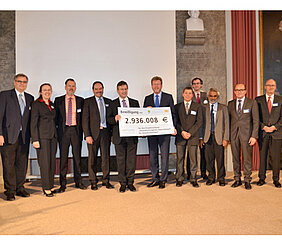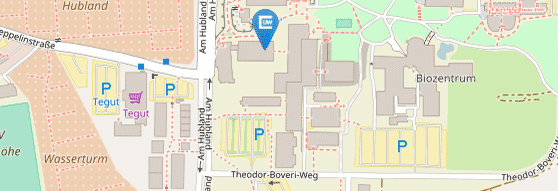Supercaps with Diamonds
12/05/2013About 3 million Euros have been granted to the research network UMWELTnanoTECH by the state ministry of environment and consumer safety (StMUV). The research group of Prof. Anke Krüger forms part of the network.

Diamonds for the storage of energy? That sounds quite unusual at first sight. However, this is the approach taken by researchers of the Julius Maximilians University Würzburg and the Bavarian Center for Applied Energy Research (ZAE Bayern e.V.) in a recently granted project of the network UMWELTnanoTECH. So called nanodiamonds will help to store energy even more efficiently in supercapacitors.
Supercaps – energy storage of the future
So called Supercaps can take up energy very quickly without high losses. They are therefore suitable for fast charging and decharging processes, such as the recuperation of braking energy in vehicles. Supercaps are produced with highly porous carbonaceous materials (so-called aerogels). It is hence possible to fabricate capacitor electrodes with very high volume specific capacities. As the life-span of supercaps exceeds that of batteries many times over they are attractive for the storage of energy. However, the maximum amount of stored energy in supercaps is still 1 to 2 orders of magnitude lower than for batteries.
Here, nanotechnology will help to improve the situation. Recent reports show that the incorporation of nanodiamond into capacitor electrodes can significantly increase the capacity and energy density of the devices. This will be investigated in more detail in the next 3 years where the group of Prof. Anke Krueger and the research team of ZAE Bayern, led by Dr. Gudrun Reichenauer will investigate the influence of nanodiamond and its function as an active component or as an additive to the electrode material.
Interdisciplinary collaboration
This highly interdisciplinary project requires expertise from many fields. The research group of Prof. Krueger at the Julius-Maximilians University Würzburg is one of the leading groups worldwide in the production, functionalization and characterization of nanodiamond materials. Dr. Gudrun Reichenauer of ZAE Bayern is an expert in the area of aerogel-based electrical energy storage. Her team has longtime experience in the synthesis of porous carbons and the electrochemical characterization of storage components.


